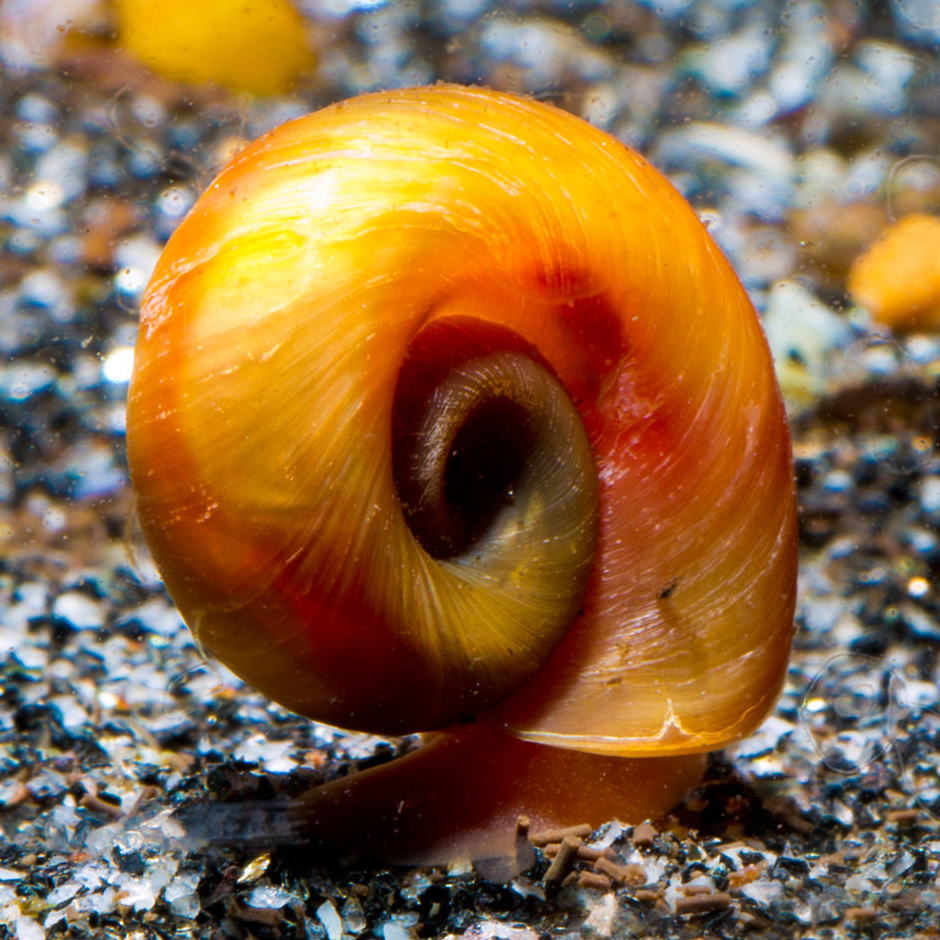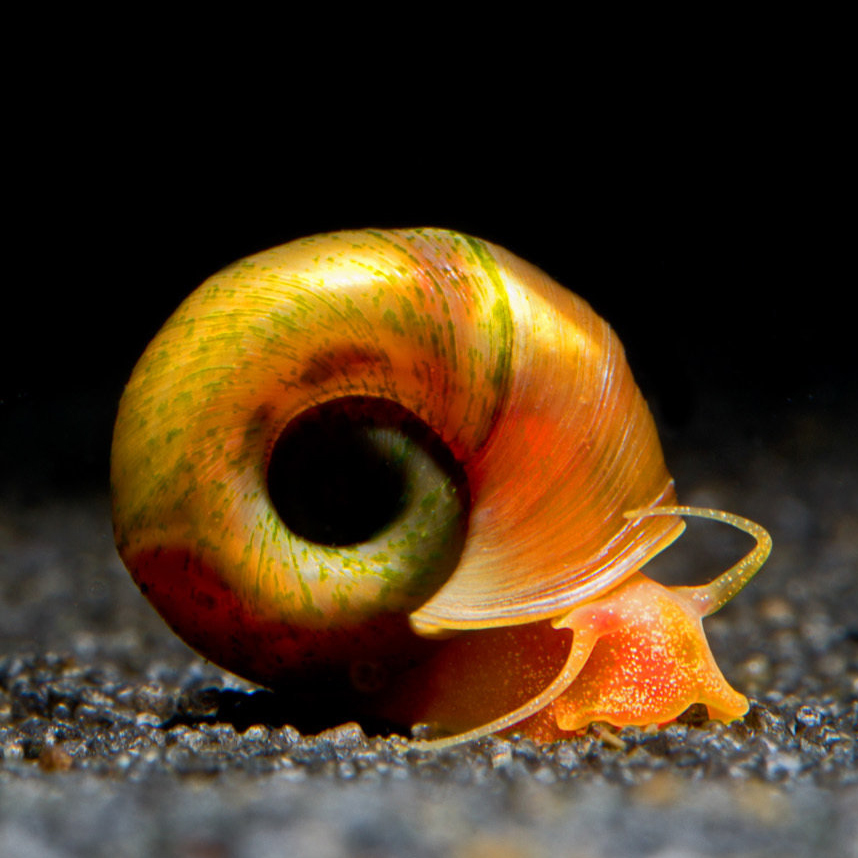Orange Ramshorn Snail
Planorbella duryi var. orange
The extremely pretty Orange Ramshorn Snail is a valuable addition to the aquarium.
- beautiful orange coloring
- robust and easy to maintain
- acts as a “health police”
1 in stock
 Delivery in a few working days
Delivery in a few working days
 Free shipping from €60 across Austria
Free shipping from €60 across Austria





Important data
Product description & details
The Ramshorn Snail, Planorbella duryi, is a freshwater snail that comes from Florida but is now also found in other parts of the world, such as Europe, due to human introduction. Its blue, pink and orange color breeding forms are extremely popular in the aquarium hobby. In the color variant “Orange Ramshorn Snail”, the eponymous ram’s horn-shaped shell, which is up to 3cm in diameter, is colored transparent orange and looks particularly bright due to the red foot of the snail. Young animals also often have dark spots on their shells, which look particularly pretty, but usually disappear with age.
Care in the aquarium
The Orange Ramshorn Snail is not only pretty, but also very easy and uncomplicated to care for. The diurnal snail constantly wanders through the aquarium in search of food and is therefore very interesting to observe. In nature and in the aquarium, the Ramshorn Snail fulfills an extremely useful and necessary role, namely that of the “health police”. By feeding on dead plant debris, carrion and leftover food, it prevents sediment from forming or pollutants from being dissolved in the water. Of course, healthy plants are not touched, which is why the snail can be put in plant aquariums without hesitation. It also has the ability to crawl along the surface of the water with its house facing down, whereby it sheds the often disturbing whitish veil, the so-called “scum skin”. As with most species of snails, medium to hard water is ideal, as the shell can be damaged if the water is too soft.
Feeding
As a classic recycler of leftovers, the Orange Ramshorn Snail feeds on biofilm and algae growth as well as detritus (dead plant material, carrion, leftover food). In the aquarium it can be fed a wide variety of commercial (snail) food, green food and leaves, but in a well-established aquarium with other animals it can usually find enough food. Especially in aquariums with rather soft water, we recommend giving food containing minerals to prevent damage to the housing.
Sexual characteristics and breeding
The reproduction of the Orange Ramshorn Snail takes place without any human support. The animals are hermaphrodites; each individual has both male and female sexual organs. The eggs are attached to the glass panels, plants or other furnishings in round gelatinous egg packets, from which they can be removed relatively easily, if offspring is undesired. When the Ramshorn Snail is introduced into new aquariums for the first time, the population can initially increase significantly due to the high food supply – for example due to the algae films or bacterial lawns that usually appear. However, over time and with sparing feeding, the population automatically settles down to an optimal level for the respective aquarium.






